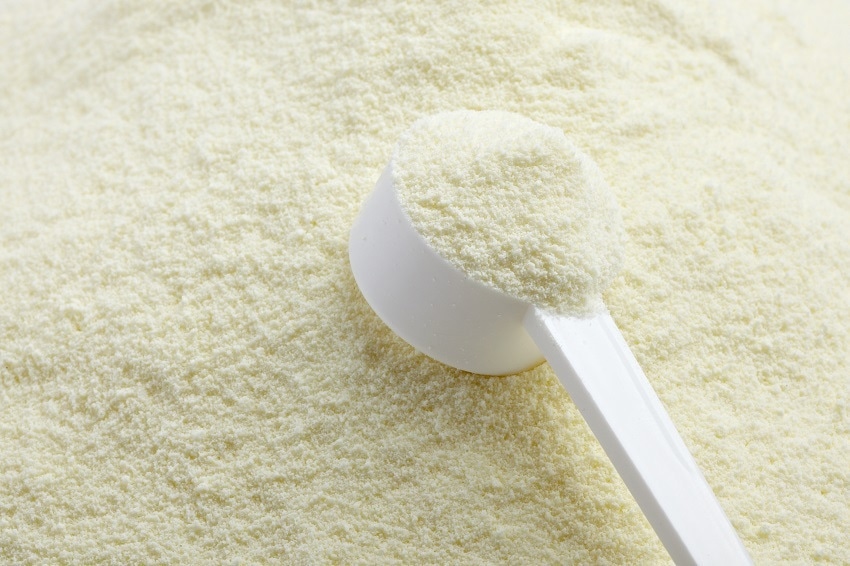Examples of powered dairy products include milk powder, milk protein, whey powder, cheese powder and infant formulas. High fat content and small-scale heterogeneity are the two main challenges faced when analyzing pressed powdered dairy samples by XRF spectrometry.

Image Credits: Picsfive/shutterstock.com
The process of mixing skimmed milk power with oils/fats and mineral premixes in some products such as infant formula, can cause a high degree of small-scale heterogeneity.
Products with high fat content (> 10%) that require pressing into pellets are limited to pressures less than 2-4 ton, otherwise the fat will be expelled out of the product. If this occurs, elements within the pellet will be differentially mobilized, which, in turn, will prevent an accurate and reproducible measurement.
In contrast, high pressures may be required to form pellets for products with low fat content. These differing pressures required to press pellets may lead to unpredictable analytical errors, particularly with low-density samples such as these.
Malvern Panalytical has developed a reliable and consistent approach for pressed powdered dairy products. A unified pressing process, which produces stable, consistent pellets, is enabled with this approach as fat content is immobilized. Furthermore, heterogeneities are minimized, providing a truly representative sample. This solution is extremely valuable for dairy product and food manufacturers alike, along with suppliers, analytical and research labs.

 Click Here to Read the Full Whitepaper
Click Here to Read the Full Whitepaper

This information has been sourced, reviewed and adapted from materials provided by Malvern Panalytical.
For more information on this source, please visit Malvern Panalytical.